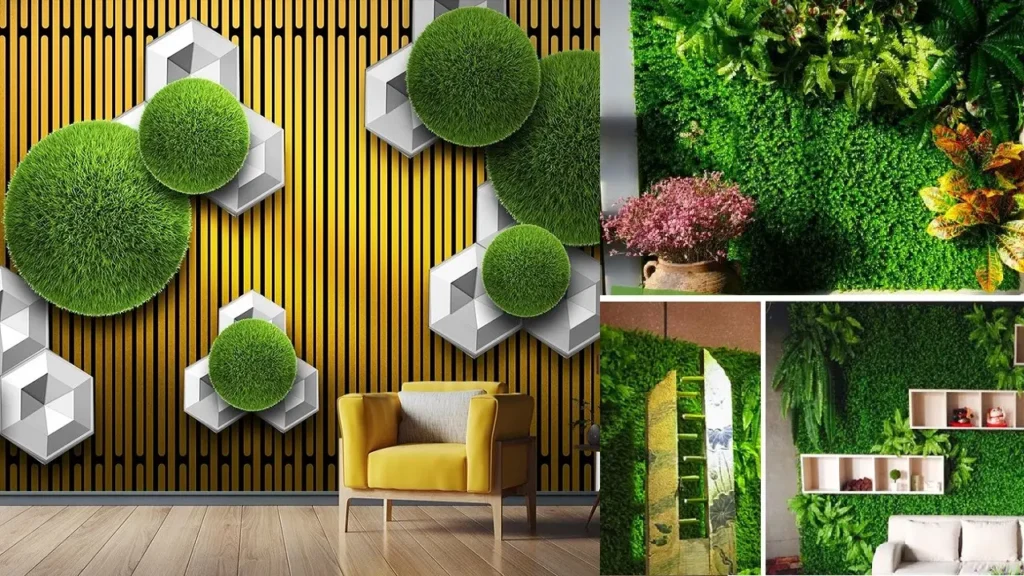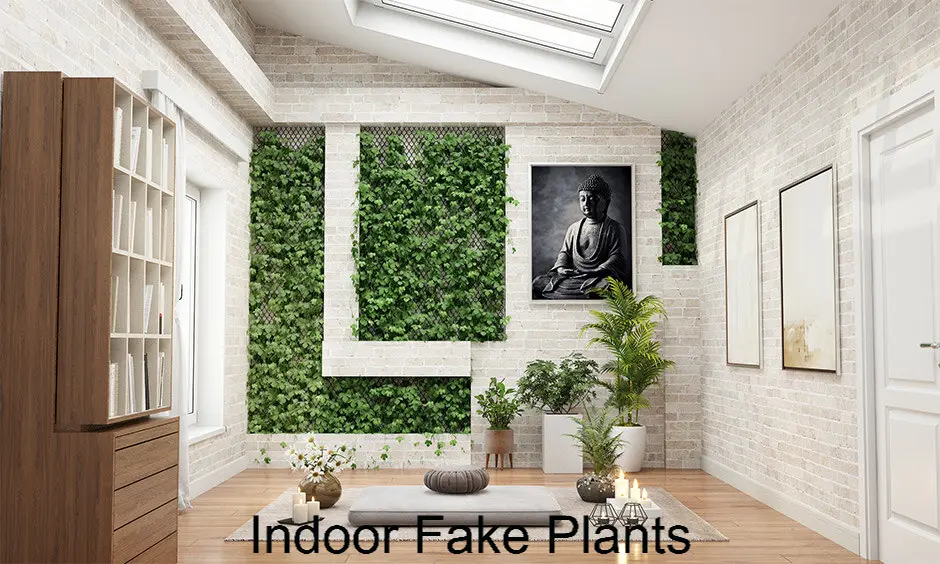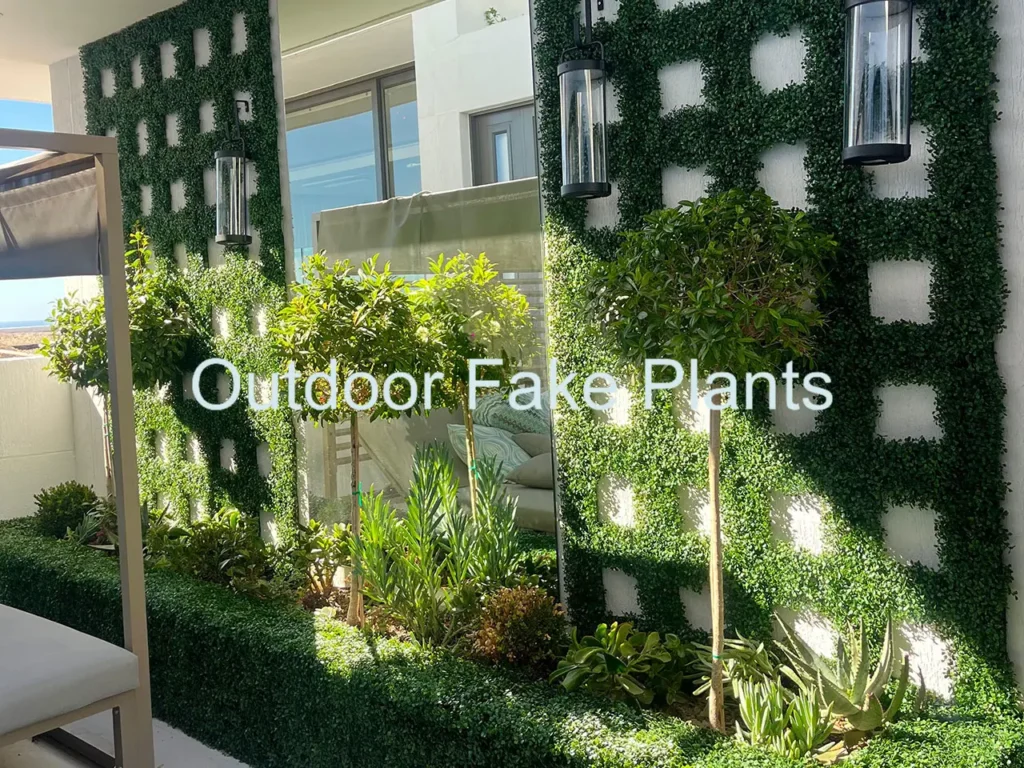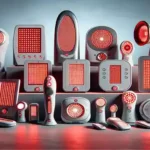Fake plants are everywhere now. People love them because they look real but need no care. Synthetic foliage means fake leaves and plants made from plastic or fabric. They stay green all year. You never need to water them or worry about them dying.
Many homes and offices use these fake plants today. They cost less money over time. You buy them once and they last for years. Real plants can die and need replacing. Fake ones stay the same forever.
What is Synthetic Foliage?

Synthetic foliage is fake plant material. Companies make it to look like real leaves and branches. They use plastic, fabric, or silk to create these plants. The best ones look so real you cannot tell the difference.
These fake plants come in many forms:
- Small desk plants for your office
- Big trees for living rooms
- Hanging vines for walls
- Bushes for outdoor spaces
- Flowers that never die
- Green walls for businesses
- Hedge panels for privacy
- Grass that stays green
Most fake plants today look much better than old ones. New ways of making them create realistic colors and textures. The leaves feel soft like real ones. The colors look natural with light and dark spots.
Types of Synthetic Foliage
You can find fake plants for any space you want to decorate. Different types work better in different places.
Indoor Fake Plants

Indoor synthetic foliage works great inside homes and offices. These plants handle indoor light well. They do not need windows or special care.
Popular indoor fake plants include:
- Fake rubber trees with big leaves
- Small cactus plants for desks
- Hanging ivy for shelves
- Fake flowers in pots
- Green plants for bathrooms
- Office plants for work spaces
- Bedroom plants that look calm
- Kitchen herbs that never die
Outdoor Fake Plants

Outdoor synthetic foliage must be strong. It faces sun, rain, and wind every day. Good outdoor fake plants have special coatings. These coatings stop fading and damage.
Common outdoor fake plants are:
- Privacy hedges for fences
- Fake grass for yards
- Climbing vines for walls
- Patio plants in pots
- Garden bushes that stay green
- Pool area plants
- Balcony plants for apartments
- Front door decorations
Special Fake Plants
Some places need special synthetic foliage. Hospitals want plants that do not cause allergies. Restaurants need plants that are safe around food.
Special fake plants include:
- Hospital plants that are clean
- Restaurant plants that meet food rules
- Stage plants for shows
- Pool plants that handle water
- Fire safe plants for businesses
- Child safe plants for schools
- Pet safe plants for homes
- Travel plants for vacation homes
Why Choose Synthetic Foliage?
Fake plants have many good points. They solve problems that real plants create. Most people find them easier to live with.
No Care Needed
The best thing about synthetic foliage is how easy it is. You never need to do anything to keep it looking good.
Benefits include:
- No watering ever needed
- No dead leaves to clean up
- No bugs or pests to worry about
- No plant food or fertilizer costs
- No repotting when plants grow
- No pruning or cutting back
- No worry about plant diseases
- No brown or yellow leaves
Save Money Over Time
Synthetic foliage costs more at first. But it saves money in the long run. Real plants need water, food, and replacement when they die.
Money benefits include:
- Buy once and use for years
- No monthly plant care costs
- No water bill increases
- No plant replacement expenses
- No tool purchases needed
- No plant sitting services when traveling
- No emergency plant doctor visits
- No seasonal plant swapping
Use Anywhere You Want
Real plants are picky about where they live. They need the right light and temperature. Fake plants go anywhere you want them.
Placement benefits include:
- Dark rooms with no windows
- Bathrooms with high humidity
- Cold areas like basements
- Hot areas like near heaters
- Vacation homes left empty
- Offices with no natural light
- Cars and boats
- Any room in your house
Where to Use Synthetic Foliage
Fake plants work in many different places. Each location has its own needs and benefits.
Home Spaces
Your home can look great with synthetic foliage in the right spots. Each room offers different opportunities.
Living room options:
- Big plants in corners
- Small plants on coffee tables
- Hanging plants from ceilings
- Plants on tall stands
- Green walls behind sofas
- Plants around TV areas
- Window plants that do not need sun
- Seasonal displays that change
Bedroom uses:
- Calm plants on nightstands
- Hanging plants from walls
- Plants on dressers
- Green plants in reading corners
- Plants that do not cause allergies
- Plants safe for children
- Plants that look peaceful
- Plants that match your style
Kitchen ideas:
- Herb plants on counters
- Small plants on window sills
- Hanging plants from hooks
- Plants near dining areas
- Plants that look fresh and clean
- Plants safe around food
- Plants that handle kitchen heat
- Plants that do not collect grease
Business Locations
Companies use synthetic foliage to make spaces look better. Happy workers do better jobs when surrounded by green plants.
Office benefits:
- Lobby plants welcome visitors
- Desk plants make work spaces nice
- Meeting room plants create calm feelings
- Break room plants add life
- Plants improve air quality feelings
- Plants reduce stress for workers
- Plants make spaces look professional
- Plants last through busy times
Store advantages:
- Plants attract customers inside
- Plants make shopping more pleasant
- Plants create good first impressions
- Plants work in any lighting
- Plants never look sick or dying
- Plants match store decorating themes
- Plants handle heavy foot traffic
- Plants need no employee care
Restaurant uses:
- Plants create comfortable eating spaces
- Plants add natural beauty to dining
- Plants work in dim lighting
- Plants handle food service temperatures
- Plants meet health department rules
- Plants do not attract bugs
- Plants stay clean and fresh looking
- Plants match restaurant themes
Special Places
Some locations have unique needs that synthetic foliage meets perfectly.
Medical facilities:
- Hospitals use plants that cause no allergies
- Doctors offices want clean plants
- Nursing homes need safe plants
- Therapy centers use calming plants
- Dental offices want stress reducing plants
- Clinics need plants that stay perfect
- Patient rooms benefit from green plants
- Waiting areas look better with plants
Schools and daycares:
- Children cannot hurt fake plants
- Plants teach kids about nature
- Plants create calm learning spaces
- Plants handle rough treatment
- Plants cause no allergic reactions
- Plants need no daily care by teachers
- Plants stay perfect through school years
- Plants make classrooms more cheerful
How to Pick Good Synthetic Foliage
Not all fake plants look the same. Some look obviously fake while others fool everyone. Knowing what to look for helps you buy the best ones.
Check the Materials
Good synthetic foliage uses quality materials. These materials look more real and last longer.
Material signs to look for:
- Leaves feel soft and flexible
- Colors look natural with variations
- Stems bend without breaking
- Surfaces have realistic textures
- Materials do not smell like plastic
- Leaves do not tear easily
- Colors do not rub off on hands
- Parts fit together well
Look at the Details
Real plants have small details that make them look natural. Good fake plants copy these details carefully.
Detail features to check:
- Leaf veins that look real
- Natural color differences in leaves
- Realistic leaf shapes and sizes
- Proper plant proportions
- Natural looking growth patterns
- Realistic branch angles
- Proper leaf attachments
- Natural looking plant bases
Test the Quality
Before buying synthetic foliage, test it to see how well it is made.
Quality tests to try:
- Bend stems gently to check flexibility
- Touch leaves to feel texture
- Look closely at connection points
- Check if parts come apart easily
- See if colors look natural in different lights
- Test weight to ensure realistic feel
- Examine for sharp edges or rough spots
- Compare to real plants if possible
Setting Up Your Synthetic Foliage
Where you put fake plants affects how real they look. Good placement makes even average plants look great.
Indoor Setup Tips
Inside your home, synthetic foliage should look natural and fit your decorating style.
Placement ideas:
- Put plants where real ones would grow
- Use plant stands to vary heights
- Group different plants together
- Place plants near light sources
- Hide plant bases with decorative pots
- Mix plant sizes for natural looks
- Leave space around plants
- Change positions sometimes for variety
Lighting tricks:
- Use lamps to highlight plants
- Place plants near windows for natural look
- Avoid harsh overhead lighting on plants
- Use soft lighting to hide any fake appearance
- Consider colored lights for special effects
- Rotate plants occasionally to vary shadows
- Add mirrors nearby to reflect plant images
- Use multiple light sources for depth
Outdoor Installation
Outside spaces need synthetic foliage that handles weather and looks natural in bright sunlight.
Weather considerations:
- Choose plants rated for outdoor use
- Secure plants against strong winds
- Ensure drainage around plant bases
- Check plants after storms for damage
- Clean plants regularly to remove dirt
- Protect plants from extreme temperatures
- Consider seasonal storage for delicate plants
- Plan for snow and ice accumulation
Natural integration:
- Mix fake plants with real landscaping
- Use realistic outdoor plant varieties
- Plant fake plants in real soil or mulch
- Add rocks or decorations around plants
- Choose plants that match your climate
- Place plants where real ones would thrive
- Vary plant heights and spacing naturally
- Consider views from different angles
Keeping Synthetic Foliage Clean
Fake plants stay beautiful with simple cleaning. Regular care keeps them looking fresh and new.
Regular Cleaning
Dust and dirt make synthetic foliage look dull and obviously fake. Simple cleaning brings back their fresh appearance.
Easy cleaning methods:
- Dust weekly with soft cloths
- Use small brushes for detailed areas
- Rinse gently with water when needed
- Dry completely before putting back
- Use compressed air for hard to reach spots
- Wipe leaves individually for thorough cleaning
- Clean plant containers too
- Replace worn out plants when necessary
Deep Cleaning
Sometimes synthetic foliage needs more thorough cleaning to remove built up dirt and grime.
Deep cleaning steps:
- Remove plants from their containers
- Wash gently with mild soap and warm water
- Rinse thoroughly to remove all soap
- Shake excess water from plants
- Air dry completely before replacing
- Check for damage during cleaning
- Replace any broken parts found
- Clean containers and decorations too
Cost and Value of Synthetic Foliage
Understanding the real costs helps you make smart buying decisions. Good fake plants cost more upfront but save money over time.
Upfront Costs
Quality synthetic foliage costs more than cheap versions. But better plants look more real and last longer.
Price factors include:
- Plant size affects total cost
- Better materials cost more money
- Detailed plants cost more than simple ones
- Brand names often charge higher prices
- Bulk buying can reduce per plant costs
- Seasonal sales offer good deals
- Online shopping provides more choices
- Local stores let you see before buying
Long Term Savings
The real value of synthetic foliage shows up over months and years of use.
Savings add up from:
- No replacement costs for dead plants
- No water bills for plant care
- No fertilizer or plant food expenses
- No pest control treatments needed
- No plant sitting fees during vacations
- No tool purchases for plant care
- No emergency plant replacement costs
- No seasonal plant rotation expenses
Value Comparison
Comparing fake plants to real ones shows the true financial picture over time.
Cost comparison factors:
- Real plants need replacing when they die
- Fake plants last for many years
- Real plants need daily care and attention
- Fake plants need only occasional cleaning
- Real plants have ongoing monthly costs
- Fake plants have one time purchase costs
- Real plants risk water damage to furniture
- Fake plants eliminate water damage risks
Environmental Impact
Many people wonder about the environmental effects of synthetic foliage compared to real plants.
Resource Use
Fake plants use resources differently than real plants. Understanding these differences helps make informed choices.
Resource considerations:
- Fake plants use no ongoing water
- Real plants need daily watering
- Fake plants require no fertilizers
- Real plants need plant food regularly
- Fake plants use no pesticides
- Real plants may need bug treatments
- Fake plants ship once to your home
- Real plants need multiple deliveries
Disposal Concerns
Eventually all synthetic foliage wears out and needs disposal. Planning for this helps reduce environmental impact.
Disposal options:
- Some fake plants can be recycled
- Donate good condition plants to others
- Reuse plant parts for craft projects
- Check local recycling programs for plastics
- Some manufacturers take back old plants
- Repair plants when possible instead of discarding
- Choose plants made from recyclable materials
- Buy quality plants that last longer
Future of Synthetic Foliage
Fake plants keep getting better as new materials and methods develop. Future plants will look even more realistic.
New Materials
Companies develop better materials for making synthetic foliage that looks and feels more like real plants.
Material improvements include:
- Softer textures that feel more natural
- Better colors that do not fade
- Stronger materials that last longer
- Lighter weight plants easier to move
- More flexible stems and branches
- Better UV protection for outdoor plants
- Improved fire resistance for safety
- Recyclable materials for environmental benefits
Design Advances
New design methods create more realistic plant appearances and better functionality.
Design improvements include:
- More accurate plant shapes and sizes
- Better leaf vein patterns and details
- More natural color variations
- Improved root and stem appearances
- Better pot and container integration
- More realistic growth patterns
- Enhanced seasonal variety options
- Custom plant design services
Conclusion
Synthetic foliage offers a practical solution for people who want beautiful plants without the work. These fake plants look real and last for years. They work in any location and need almost no care.
The best fake plants cost more upfront but save money over time. They eliminate the stress of keeping real plants alive. You can enjoy green spaces without worrying about plant care.
Modern synthetic foliage looks so realistic that most people cannot tell it is fake. This makes it perfect for homes, offices, and public spaces. As materials and methods improve, fake plants will become even better choices for decorating any space.






